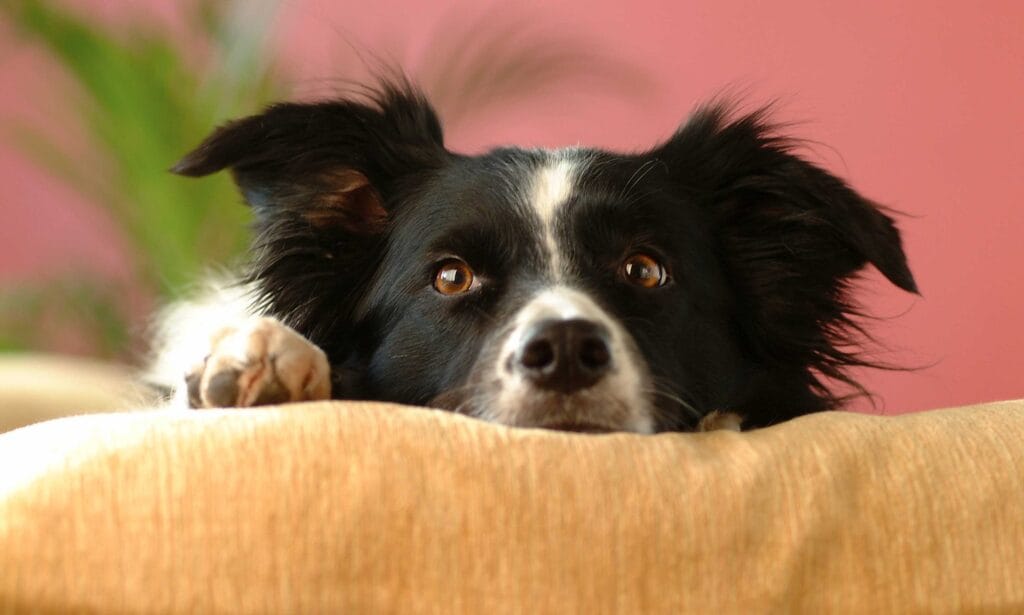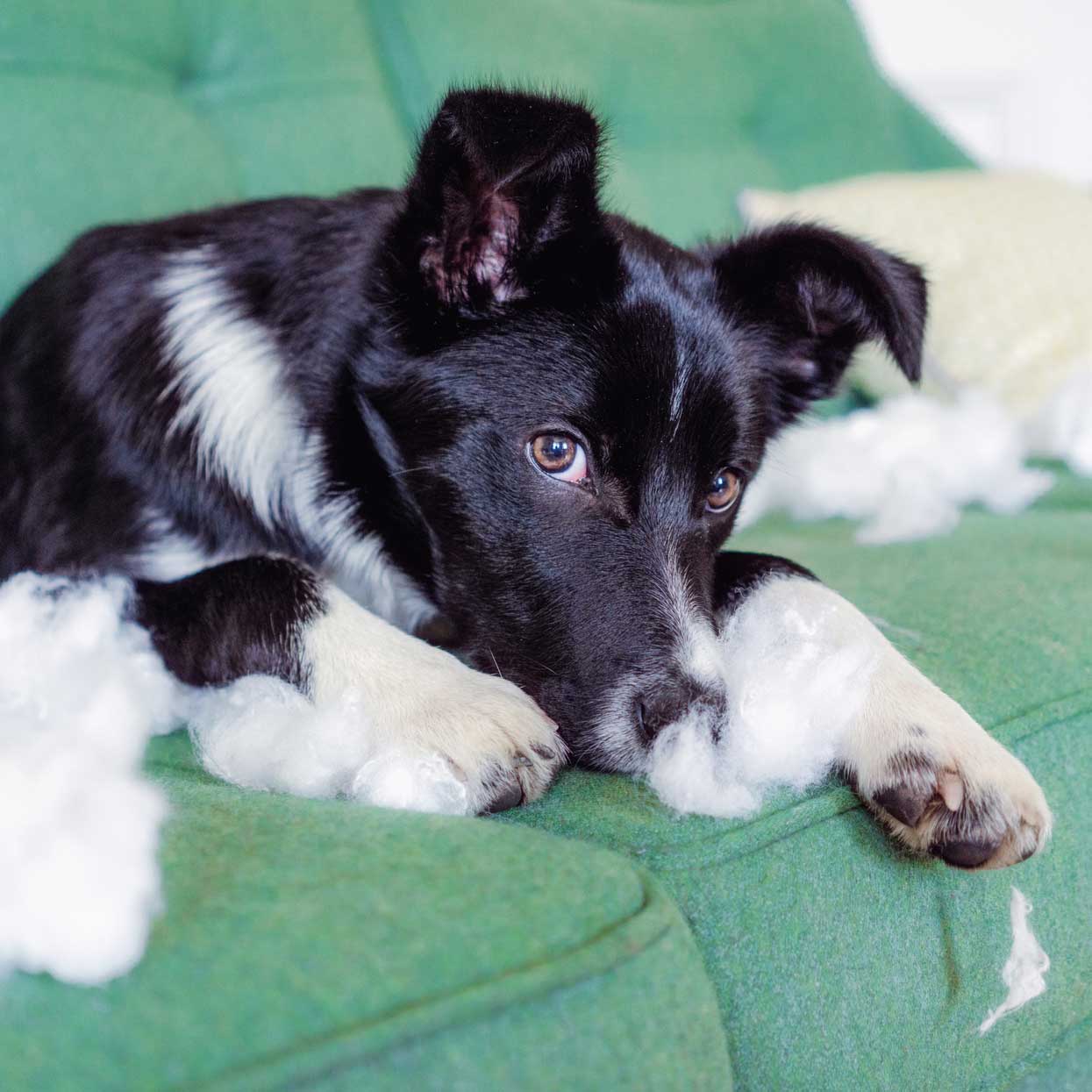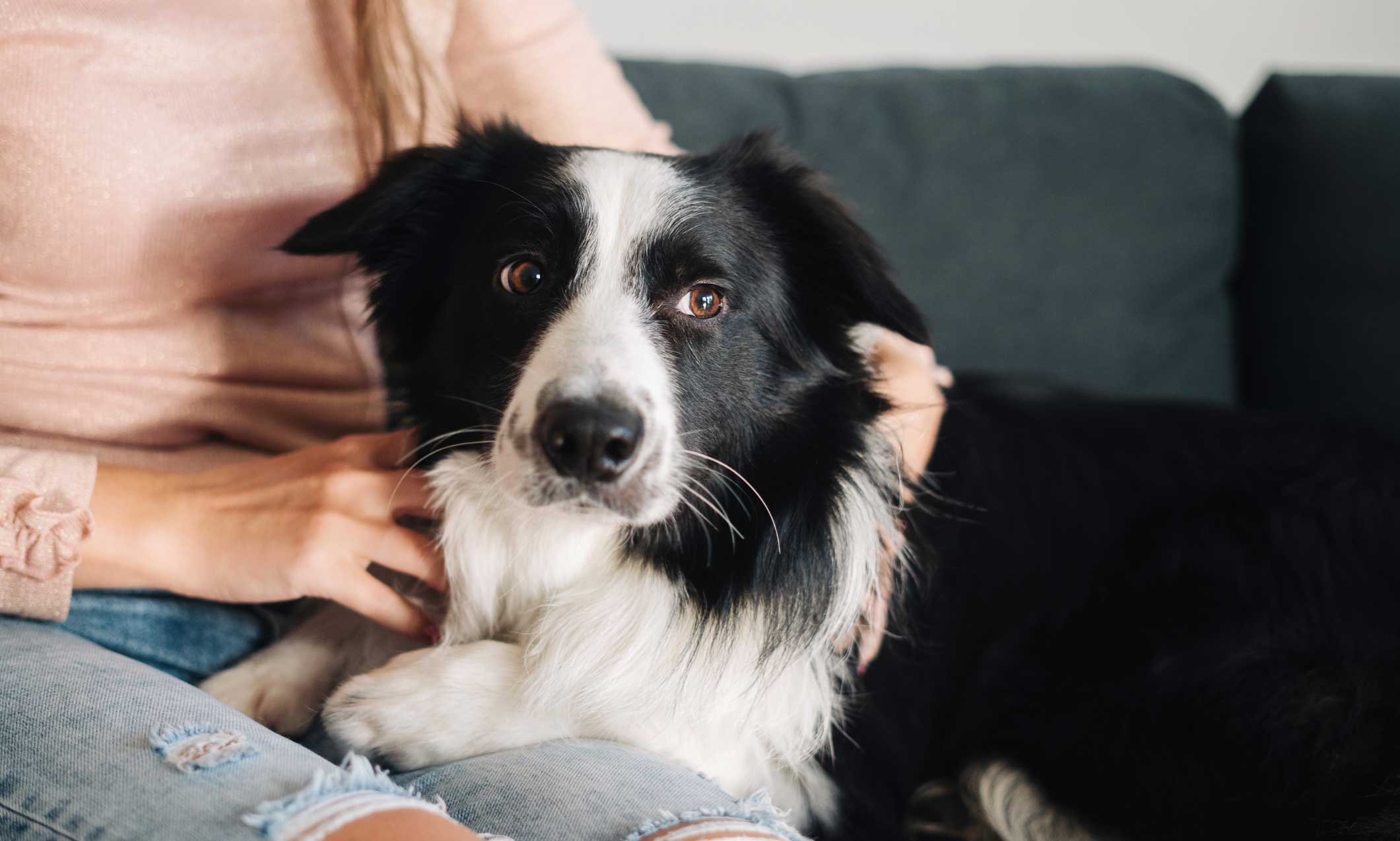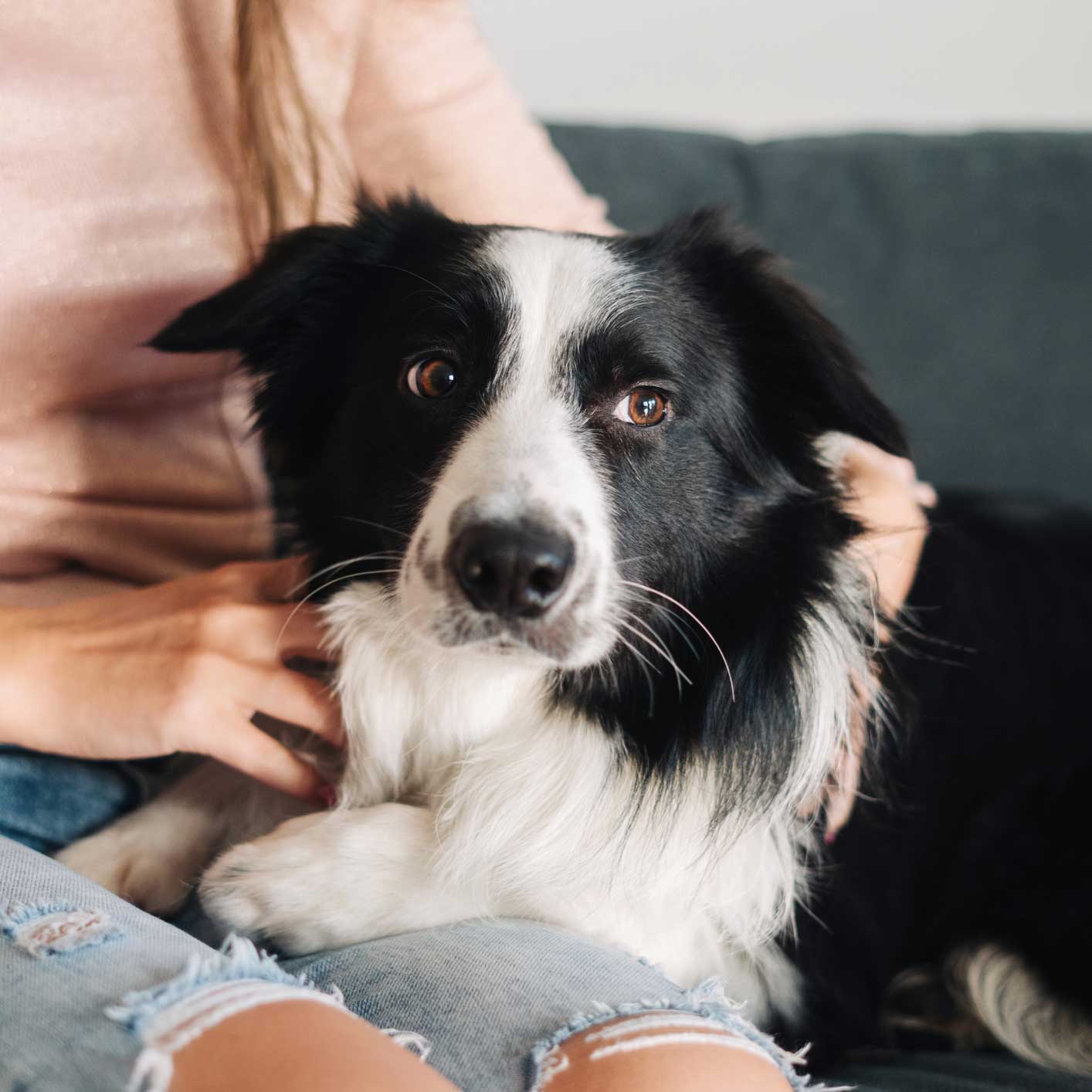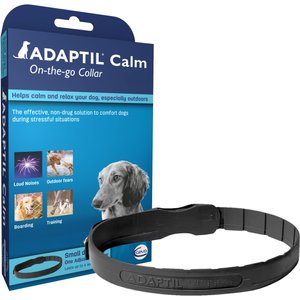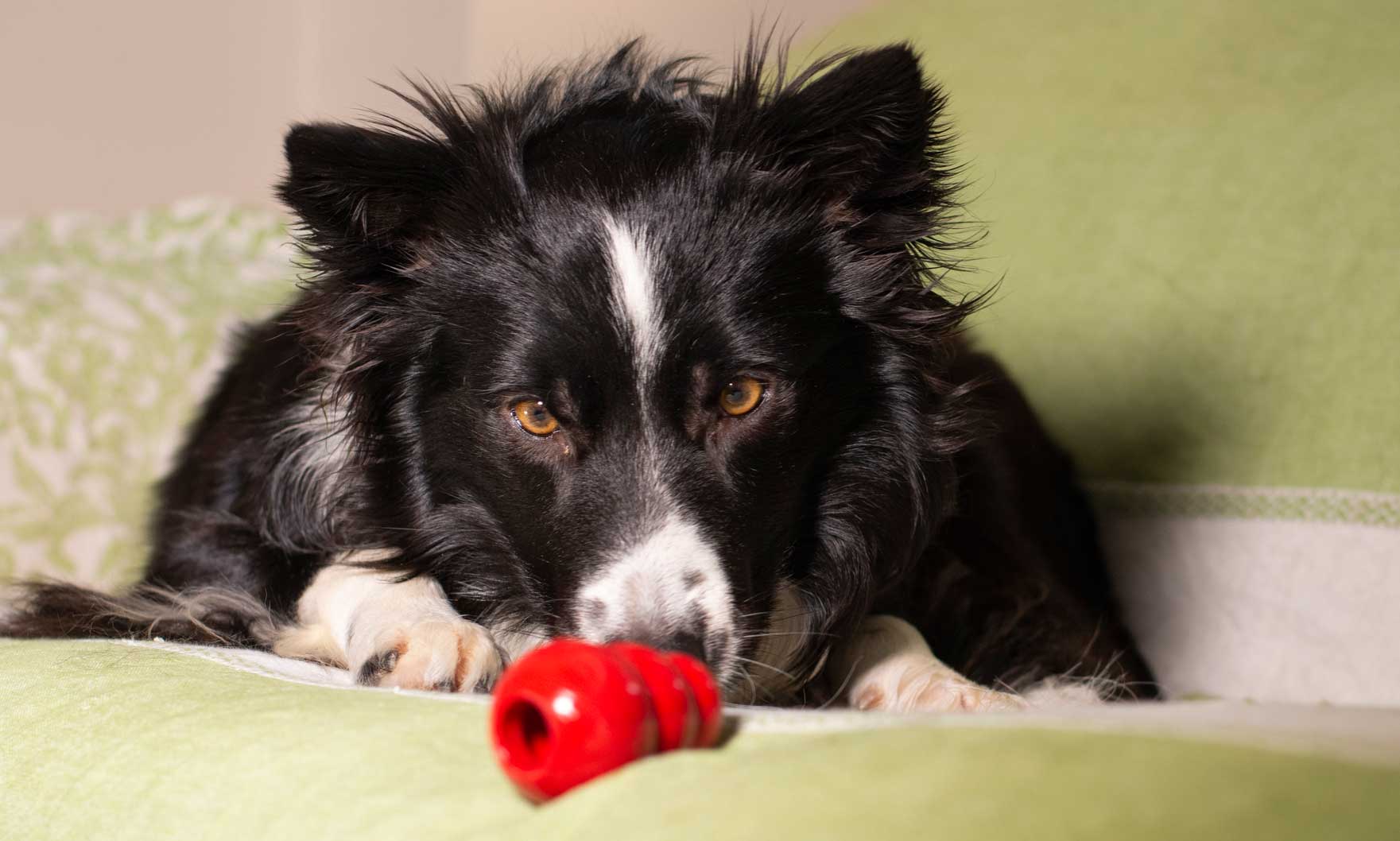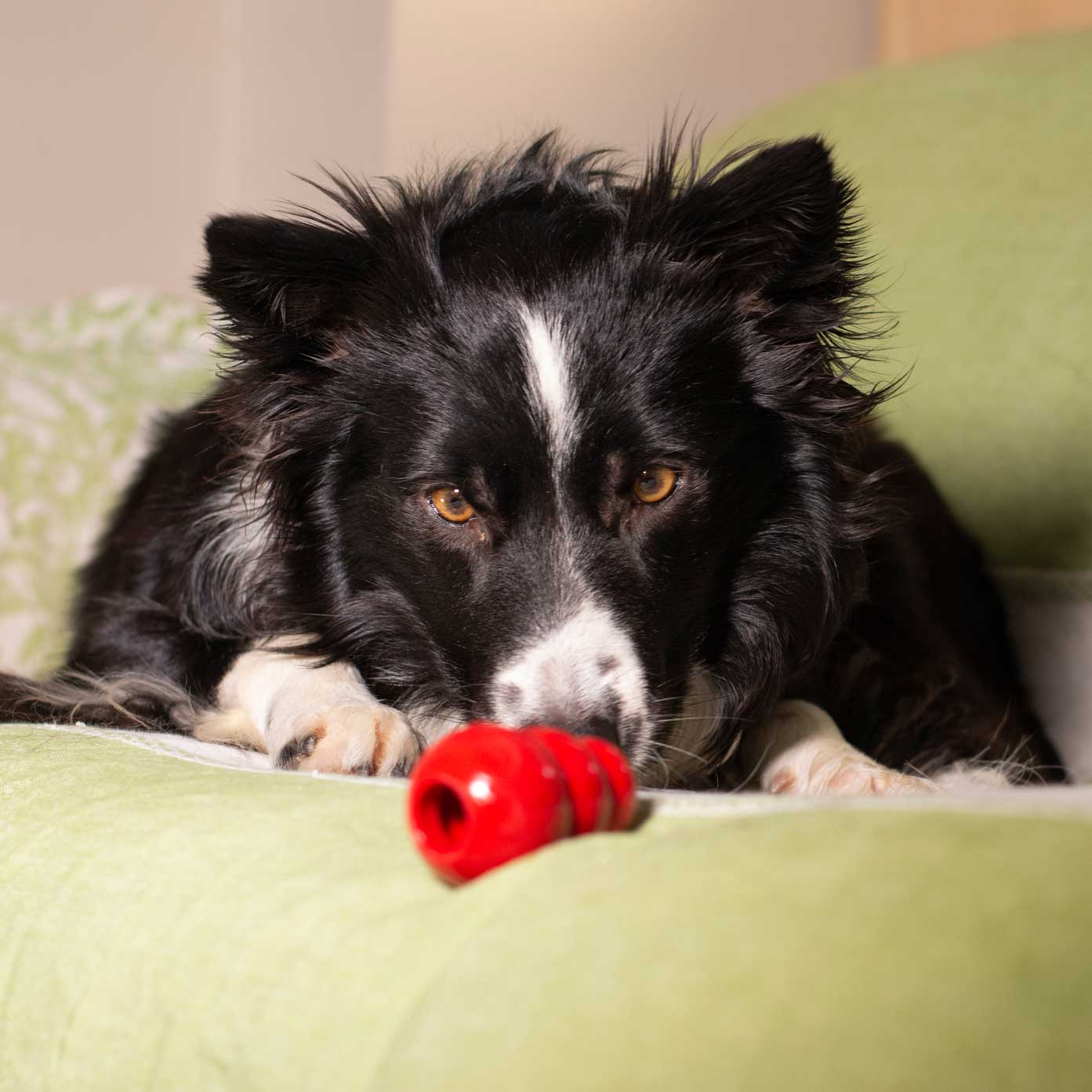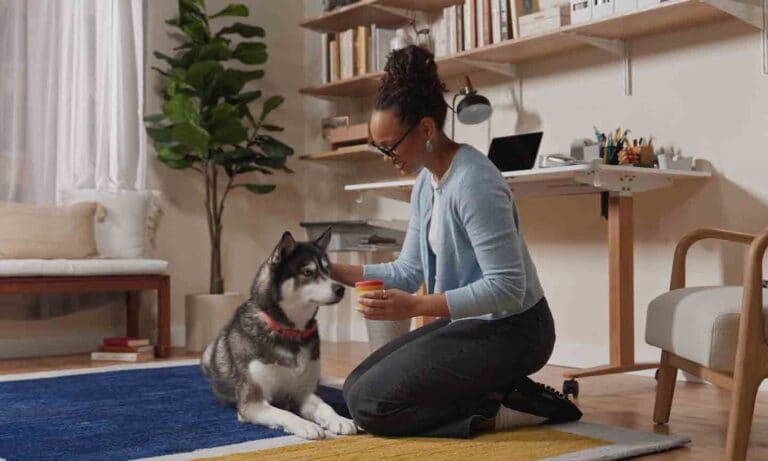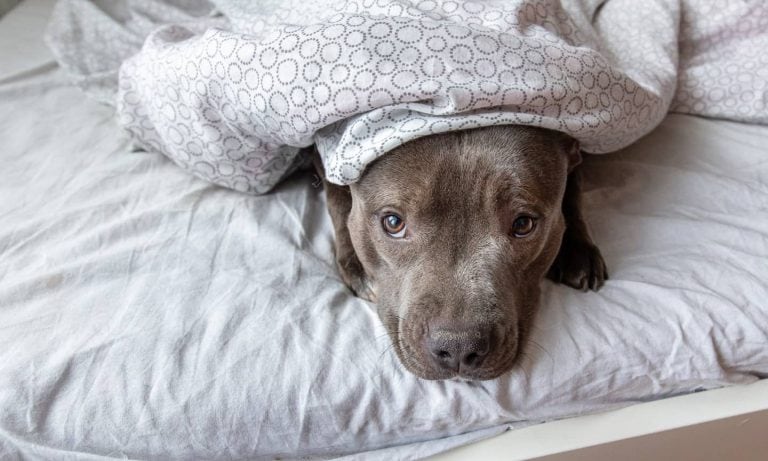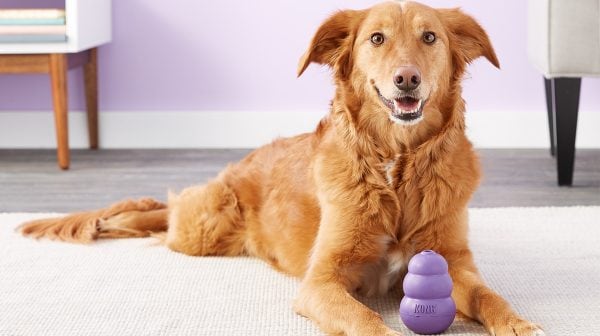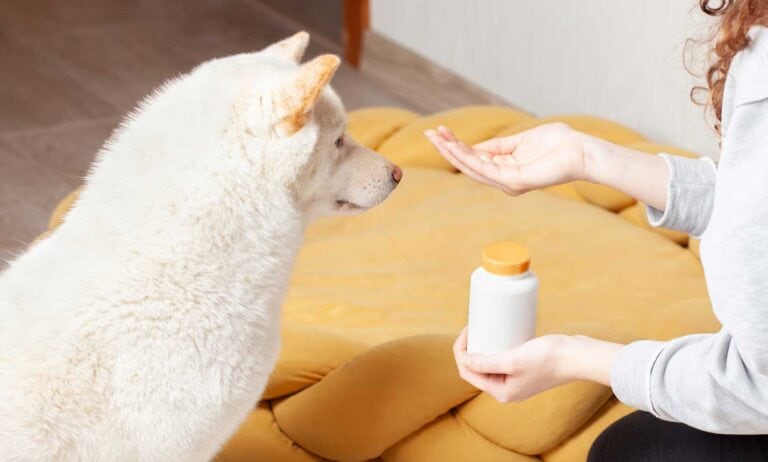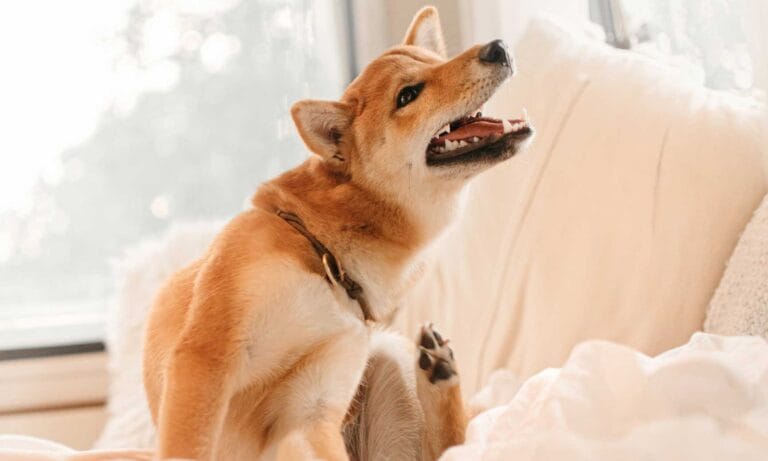Dogs can feel—and even catch—human emotions, which is likely why we feel that dogs just “get” us. However, if you notice your dog has extreme reactions of emotions, like nervousness or fear, they may have an anxiety disorder. Dog anxiety is actually quite common. Like people, there are multiple reasons dogs can develop anxiety, and if left untreated or if severe, it may impact their quality of life depending on the severity.
But we have good news: While our dogs can’t verbally tell us how they’re feeling, there are signs to watch for, as well as techniques pet parents can use to relieve—and even prevent—anxiety in our canine companions.
Click to jump to each section:
What Does Dog Anxiety Look Like? 11 Signs and Symptoms
Symptoms of anxiety vary depending on the cause, says Dr. Primrose Moss, Master’s in Zoology, VetMB, MRCVS. If your dog exhibits any of the following behaviors, try to pinpoint the potential trigger.
Common dog anxiety signs and symptoms include:
- Increased vocalization (i.e., excessive barking, whining, whimpering)
- Excessive grooming
- Excessive drooling or lip licking
- Destructive behaviors
- Potty accidents (i.e., inappropriate urination or defecation)
- Panting
- Yawning
- Pacing
- Exposing their belly
- Showing “whale eye” aka the whites of their eyes
- Shaking or trembling
Dr. Moss describes low-level anxious behaviors as the submissive or appeasing behaviors our dogs may exhibit to indicate discomfort and to attempt to defuse the situation such as exposing their belly, crouching and other avoidance behaviors.
Why Do Dogs Get Anxious? 6 Possible Causes for Dog Anxiety
Dogs may get anxious due to the following:
- Loud noises (aka noise phobias). Dogs have sensitive ears and a keen sense of hearing, so unexpected sounds like fireworks or thunder can be extremely startling.
- Separation from their pet parent (aka separation anxiety). Some breeds can be more prone to developing separation anxiety than others. Separation anxiety can occur due to changes in the family, home or routine.
- Other people or dogs. If a pup wasn’t socialized early in life, they may feel nervous around both human and animal strangers.
- Dogs love routine. When it’s time to travel, this can feel out of the ordinary and unfamiliar, causing them to feel uncertain and anxious.
- Overwhelming environments. Loud noises paired with hectic environments can be overwhelming for us humans, and even more so for our canine companions. If there’s a lot of external stimuli, such as more activity, people, pets and/or noise than usual, a dog may feel overstimulated (e.g., parties, dog parks, young children running around).
- Previous trauma. If you’ve rescued a dog, Dr. Moss says anxiety can be based on previous trauma or poor socialization. Some dogs may be anxious around certain objects, areas of their body, people with particular voices, a specific gender, or even people with certain hairstyles.
As pet parents, it’s important to watch our dog’s behavior and be attentive during times of anxiety, tending to them just as they unconditionally tend to us.
Do Certain Dog Breeds Get More Anxious Than Others?
The following breeds may be prone to developing some type of anxiety:
- Bernese Mountain Dog
- Border Collie
- Cavalier King Charles Spaniel
- Cockapoo
- Collie (rough and smooth)
- Finnish Lapphund
- German Shepherd
- Great Dane
- Labrador Retriever
- Lagotto Romagnolo
- Lapponian Herder
- Miniature Schnauzer
- Shetland Sheepdog
- Soft-Coated Wheaten Terrier
- Spanish Water Dog
- Staffordshire Bull Terrier
- Mixed breeds
Dr. Moss says certain breeds such as working breeds can develop anxiety because they have a high work drive and are incredibly intelligent but can struggle with boredom and anxiety in a family setting. On the other hand, dogs who have also been bred as companions are often affected by separation anxiety, she says.
She’s also noticed popular breeds like Cockapoos are affected. Due to their surge in popularity and limited socialization throughout Covid-19, this dog may be more prone to separation anxiety.
What’s more, the 2020 study found that out of roughly 13,700 Finnish pet dogs, 72.5 percent of them displayed anxiety-like behaviors—with some of the breeds listed above, along with mixed breeds, making up 35 percent of all the findings.
How Can I Help My Anxious Dog? Dog Anxiety Treatment
There are, fortunately, a few ways to help them feel calm and content depending on the type of anxiety.
Avoid situations that cause your dog to become anxious
If you know your dog’s triggers, limit their exposure to the potentially stressful situations if possible. Some are inevitable, like car rides to the vet or thunderstorms, but the key is to not put your dog in these situations unnecessarily until you’ve found a treatment that helps calm them.
Create a safe space
Designate an area of your home where your dog can get some R&R when they’re feeling anxious. Deck out their zen space, whether it’s a fort or their kennel, with a comfy dog bed, blanket and their favorite toys to keep them busy. Maybe give your dog a good massage, too!
Dr. Moss says pet parents can also use calming aids, diffusers and sprays, such as pheromone-based treatments, like the Adaptil Calming Collar, and products such as Pet Remedy Natural Calming Spray, which contain valerian and other herbs. Because cats are sensitive to some of the ingredients in these kinds of products, check with your veterinarian to see if they’re safe to use.
Offer your dog calming nutritional supplements
If your dog frequently displays anxious behaviors, Dr. Moss says they may benefit from an over-the-counter calming supplement, such as the milk protein-based Zylkene, before or during a stressful situation. You can also talk to your vet about whether CBD may be a suitable option for your dog.
Dress your dog in anti-anxiety wraps or vests
If your pooch is OK with wearing clothing, the ThunderShirt vest or Happy Hoodie can relieve stress by applying gentle pressure and reducing noise, respectively. Make sure it isn’t too tight or loose on your dog’s body.
If you dress your pooch in anti-anxiety clothing or accessories for the first time and they show signs of discomfort or stress, remove it immediately.
Either way, always supervise your pet while they’re wearing clothing to ensure their safety.
Try behavioral modification techniques
“The most important treatment for a dog’s anxiety is effective training designed to help the cause of their anxiety,” Dr. Moss says. “It’s important to work with a reputable dog trainer, ideally after seeking a veterinary behaviorist, to come up with a tailored plan.”
For example, she says, helping a dog manage separation anxiety often starts with small steps toward desensitization and counterconditioning—like putting on a coat, picking up your keys or nearing the door before working up to leaving them for longer periods.
“Patience is key,” Dr. Moss says.
Consult a vet about anxiety-relieving medications
If the above methods aren’t resulting in improvement in your dog’s anxiety, you may need to discuss medication with your vet, Dr. Moss says. “Medication alone is unlikely to help a very anxious dog,” she adds, “so it’s important to use it as part of a broader treatment plan.”
For more specific episodes of anxiety, such as long car journeys or fireworks, your vet may be able to prescribe short-term medications to help. However, Dr. Moss says it’s best to combine anti-anxiety medication or antidepressants with other measures, like creating a safe space for your dog and working to desensitize them to specific stressors.
How Do I Help Prevent Dog Anxiety?
Work on socializing your dog
Although it’s best to start socializing your dog during puppyhood so they grow up confident and comfortable in various situations, it’s possible to socialize an older dog, too. Either way, it requires a thorough approach, Dr. Moss says.
Proper socialization involves your dog mixing with other, well-mannered dogs to teach them the correct ways to interact. This also includes getting your dog used to different people, sounds, sights, smells and sensations (e.g., car travel, children playing, fireworks and sirens) and making sure they’re getting experience with these, Dr. Moss says.
Additionally, get your canine companion used to spending time alone, ideally as a puppy. Dr. Moss recommends starting small by leaving your pup in another room and combing back shortly after, before working up to longer periods. She says it’s essential to not greet your puppy immediately after returning, as an exuberant greeting as soon as you return can easily reinforce separation anxiety, both in pups and older dogs.
Dr. Moss says it’s worth remembering that, sometimes, even if you do this, your pup may still develop anxious behaviors down the line.
Reward your dog for their calm behavior
Getting your dog to feel less anxious and more confident is a work in progress. With positive reinforcement, set your dog up for success by praising and rewarding their calm behavior every time, no matter if it’s with an enrichment toy, like a peanut butter-filled KONG, or treats, like Zuke's Mini Naturals.
Ease into new situations or changes
Easing your dog’s anxiety requires plenty of love, time and patience. Do not force your dog to face their fears, as this can be traumatic and cause even more anxiety. Instead, let your pup set the pace; they’ll be glad you were there for them every step of the way!
If you suspect your dog has anxiety, implement behavioral modification techniques and create a nurturing, low-stress environment. Reward their calm behaviors so they can ultimately thrive. Though it may be a long process, helping your dog improve their well-being is so worth it—and it’ll help them live a happier, healthier life overall.
Dr. Moss says every dog is unique, so it can be difficult to give a one-size-fits-all rule when it comes to anxiety. She recommends consulting a vet if you notice your dog is regularly upset and unsettled; engages in unwanted behaviors; or displays reactive behaviors. If you are still looking for the right vet for your pet, here is our guide to determining the ideal fit for your four-legged best friend.
More on helping your anxious dog:
Share:
